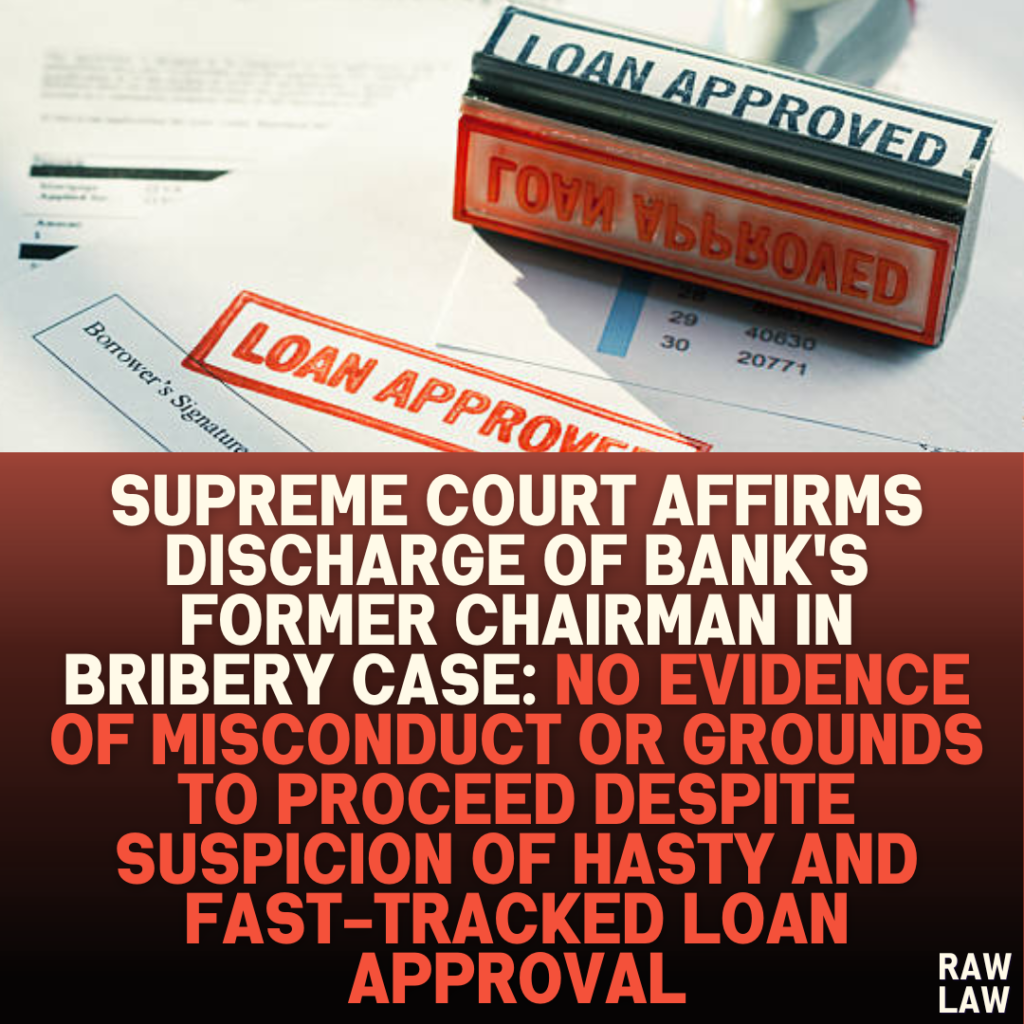Court’s Decision:
The Supreme Court dismissed the Central Bureau of Investigation’s (CBI) appeal against the discharge of the former Chairman and Managing Director (CMD) of the Central Bank of India, affirming that mere suspicion of undue speed in the approval of credit facilities is insufficient to frame charges. The Court ruled that the role ascribed to the respondent did not demonstrate complicity in any criminal offense, particularly as the proposal passed through proper channels before being approved.
Facts:
The case revolved around allegations that the Central Bank of India, during 2010-2011, sanctioned substantial credit facilities to a private company, including a short-term loan of ₹50 crores, a letter of credit of ₹100 crores, and export packing credit (EPC) of ₹330 crores. It was alleged that the funds disbursed by the bank were misappropriated and not used for the intended purpose of procuring materials for a project in Tanzania. The CBI charged several individuals, including the respondent, who was the CMD at the time, under various provisions of the Indian Penal Code (IPC) and the Prevention of Corruption Act (PC Act), citing conspiracy to defraud the bank.
Issues:
- Whether the respondent, the former CMD of the bank, was complicit in the fraudulent disbursement of loans and misappropriation of funds.
- Whether the High Court’s decision to discharge the respondent was correct, given the suspicion of undue haste in the approval of the credit facilities.
Petitioner’s Arguments:
The CBI, represented by the Additional Solicitor General, argued that the High Court erred by conducting what amounted to a “mini-trial” at the stage of framing charges. The prosecution emphasized that even a strong suspicion is sufficient for framing charges, particularly in conspiracy cases, where not all conspirators need to be aware of every detail. They contended that the respondent, as the CMD, signed the memorandum that facilitated the disbursement of funds despite procedural irregularities and lack of proper due diligence. This, they argued, was sufficient to proceed with a trial.
Respondent’s Arguments:
The respondent’s counsel contended that there was no direct involvement or evidence to suggest that the former CMD was complicit in the alleged conspiracy. The counsel argued that the credit facility was processed through standard procedures, including approvals by various committees, and that the respondent’s role was limited to signing the memorandum in line with recommendations made by senior officials. The High Court’s discharge order, they argued, was appropriate, as the evidence did not establish any criminal intent or misconduct by the respondent.
Analysis of the Law:
The Court examined Sections 420 (cheating), 468 (forgery for the purpose of cheating), 471 (using forged documents), and 120-B (criminal conspiracy) of the IPC, along with relevant provisions of the PC Act. The crux of the legal issue was whether the respondent’s actions in the disbursement process amounted to criminal misconduct or conspiracy under these provisions.
Precedent Analysis:
The Court did not cite specific precedents but relied on the established principle that mere suspicion or procedural irregularities are insufficient to frame charges without concrete evidence of criminal intent or complicity.
Court’s Reasoning:
The Court found that the respondent’s role in the sanctioning of the credit facilities was limited to signing the memorandum, which had already been approved by the Loan Advisory Committee and other senior officials. The Court noted that no material evidence was presented to suggest that the respondent had personal knowledge or involvement in any fraudulent activities. Additionally, the speed with which the loan was sanctioned, while suspicious, did not amount to proof of misconduct, particularly as the respondent acted within his official capacity and based on recommendations made by others.
Conclusion:
The Supreme Court upheld the High Court’s decision to discharge the respondent, concluding that the evidence on record did not support the framing of charges against the former CMD. The Court clarified that its observations were limited to the role of the respondent and did not affect the trial against other accused persons.
Implications:
The ruling underscores the importance of concrete evidence in cases of conspiracy and corruption, particularly when dealing with high-ranking officials. The decision also highlights that procedural irregularities, even if suspicious, do not automatically implicate all individuals involved in the process unless their direct complicity can be demonstrated.
